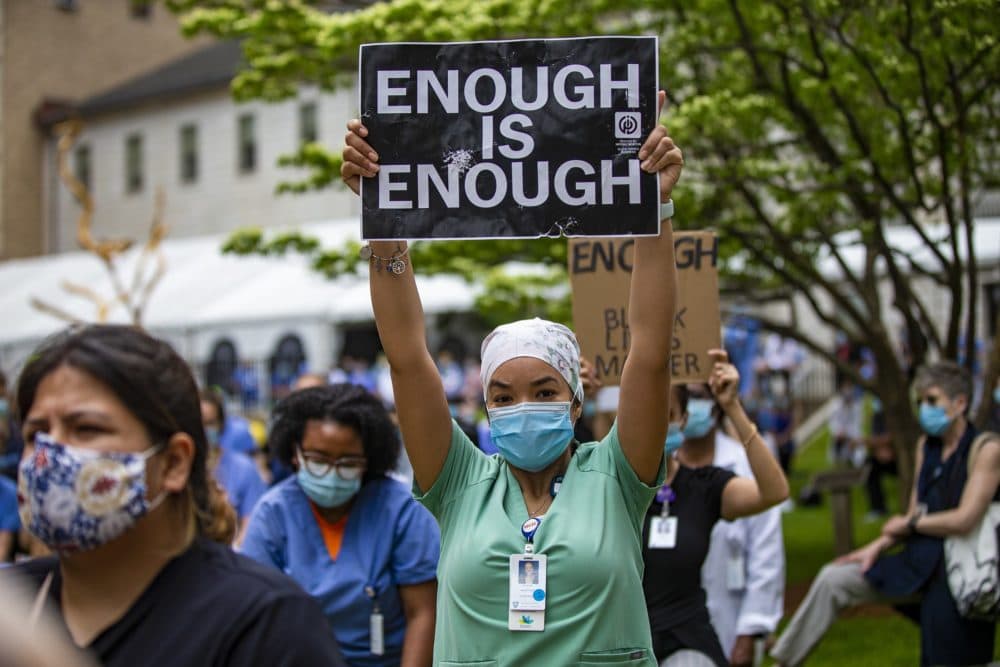Dissection of a Texas Wrongful Conviction
If you were to google May 15th, 1994, you would learn that it was a Sunday, that “The Sign” by Ace of Base was the #1 song in the United States, and you might learn of a few vaguely notable birthdays. What you would not know, however, was that a series of events beginning on May 15th, 1994, altered the course of 19-year-old Richard Miles’ entire life.
After spending the day with a close friend, Miles was dropped off only about a mile away from his residence with the casual intention of walking the short distance home — at this point, in the earliest hours of May 16th. Unbeknownst to Miles, a shooting had taken place at a nearby Texaco gas station, leaving one man dead and another one with significant injuries. Only a few minutes into his journey, Miles was stopped by police and arrested. In his own testimony of events, Miles explains that he did not feel particularly unsettled at this point, armed with the knowledge and certainty that he had not committed any crime.
As described by witnesses of the Texaco shooting, the suspect police were looking for was a tall, dark-skinned man in a white tank top and dark shorts wearing a floppy hat. As far as matching the physical description, Miles did not meet many of the qualifications. Miles is around 5 feet 6 inches in height, is a light-skinned man, and was wearing dark pants and a white tank top upon his arrest.
Following his apprehension, Miles was not taken directly to the police station but was escorted to the scene of the crime. Once at the scene, Miles was led from the police vehicle, swabbed for gunshot residue, and seen in handcuffs by a still-present witness to the shooting.
In the interrogation phase, Miles provided five alibis, which were all checked out that night and found to be accurately conveyed, though no written statement was taken. A photographic array was developed and presented to seven witnesses — an array including Miles and five other men. Miles’ photo was taken in the dark, without flash, and he was the only man in the lineup photographed in a white tank top. Only one witness identified Miles. The gunshot residue test performed came back positive for a spot in Miles’ right palm. Miles was charged.
The Charges
- One count of first-degree murder
- One count of attempted aggravated assault
The Trial
In the trial phase, the state’s case was supported by one eyewitness, Marcus Thurman, and by Vicki Halls of the Southwest Institute of Forensic Science in presentation of the gunshot residue results. The living victim, Robert Johnson, testified with the claim that Richard Miles was lighter than the shooter. Two other eyewitness to the shooting, Cassandra Knight and Henry Evans, both testified with the claim that Miles did not physically resemble the shooter. Fingerprints found at the crime scene did not match Miles. No weapon was ever found on or related to Miles and the defense pointed out that Miles was left-handed.
On August 26th, 1995, in the 282nd District Court, Miles was found guilty on both charges and given 4o years for first-degree murder and 20 years for aggravated assault.
The Errors
- Tainted Identification. Miles was taken to the scene of the crime rather than the police station, where he was seen by Marcus Thurman, the only eyewitness to identify Miles. In trial, Thurman was coached as to where Miles would be in the courtroom.
- Gunshot Residue (GRS) Results. Touching handcuffs can result in a positive GRS test and Miles was handcuffed prior to being swabbed for GRS. Additionally, the GRS was only found in the palm of his right hand, which is inconsistent with where the residue would’ve been found had he been holding and shooting a gun, particularly given Miles was not right-handed.
- Suggestive Photo Lineup. In his photograph, Miles appeared darker than he is as a result of the picture being taken as a black-and-white with no flash. Height was not accounted for in the photographic array and Miles was the only man in the lineup in a white tank top matching the description presented to officers by witnesses at the scene.
The Innocence Process
Miles’ legal battle in pursuit of his innocence began with a direct appeal in 1996, where it was argued that the evidence used to convict Miles was not sufficient as supported by tainted identification processes. In July of 1997, his conviction was affirmed. In 2004, a writ of habeas corpus was filed, citing ineffective assistance of counsel, destroyed evidence, and a failure to disclose favorable evidence. Miles’ conviction, however, was affirmed once again in 2005. Several years prior, Miles met a man named Benjamin Spence, an inmate also seeking proof and support of his innocence, who introduced Miles to Centurion Ministries. Centurion Ministries is a nonprofit organization dedicated to overturning wrongful convictions, taking on some of the most challenging cases of innocence where DNA evidence in support of innocence is not necessarily present. In 1997 and, after 10 years of communication, Miles’ case was taken up in 2008. Investigations revealed a Brady violation where the state had failed to produce records identifying other potential suspects. With updated information on the science of GRS testing, the results were proved to be negative in relation to Miles’ case. On October 12th, 2009, after 15 years incarcerated, Richard Miles was released from prison. In 2010, a Critical Incident Unit investigation led to Marcus Thurman recanting his identification, with the admittance that the prosecutor influenced his perception and identification of Miles in his identification. Finally, in 2012, the Texas Court of Criminal Appeals declared Miles actually innocent of both charges, citing egregious Brady violations. This case became the first non-DNA, no-confession wrongful conviction overturned in Texas.
Reintegration into Society Following Incarceration
A Discussion with Richard Miles
Interviewer: What are your thoughts on the way society treats those who are or have been incarcerated, and what is that like in terms of reintegration?
Miles: I’ll speak first from the perspective of the person just coming out of prison who was actually guilty of the crime they were convicted of. I think the mindset is that, at the point that the person has been given a time sentence, and they go to prison, and they stay out of trouble — they work, they do all of the programs allotted to them to do – and then they come up for parole and get denied. Oftentimes, the denial is not because of an infraction, major or minor, that they did while incarcerated. Typically, for Texas, there is a denial for nature of the offense, and it’s almost like the parole denies you for getting convicted of the crime. So when you finally make parole, there is this level of rejection that you are already walking out into. Because there is not really any psychiatric or mental health assistance within the prison system that could have potentially helped an individual unpack the actions that sent them there, that person will get out, and their mental health is not as strong as it could be. And so you can understand there is a level of stress, a level of self-identity, or lack thereof, that a person is experiencing, and that’s not even to take into consideration geographical changes, technology, and social interactions out in the world. Then, when you look at it from an individual that was innocent, there is an expectation that the system should acknowledge their wrongdoings, and not only acknowledge it, but create a pathway of success for that person who was wrongfully incarcerated. And in both cases, I think the families of those that are incarcerated that, you know, financially, mentally, and emotionally walk this journey, are also oftentimes overlooked.
Interviewer: What factors in your experience, if any, do you feel were protective while incarcerated? Things that might have made reintegration easier?
Miles: There was this craft shop available, where you could create art. You know, being able to produce something and create, while incarcerated, was really helpful for people. Something that could be given to family.
As a result of his experience with the legal system and incarceration, Richard Miles has developed a nonprofit organization called Miles of Freedom, which addresses the experience of reintegration into society for both the formerly incarcerated and their families and community. Programs offered through Miles of Freedom include reentry assistance involving employment preparation and assistance, case management, a lawn care service, a food distribution program, and something called Arts of Oppression. Arts of Oppression creates a vessel through which those currently and formerly incarcerated can create and display their art. As Miles explained, art has the potential to be very protective for those creating it but also has the potential to be deeply impactful for all those who are able to witness it. Arts of Oppression opens the conversation on what it means to create art and where art intersects with the human experience.
A Sociological Perspective
When justice is miscarried – when innocent people go to prison for 15 years for crimes they absolutely did not commit – it is crucial to examine the systems and beliefs that allow it. While the legal system can and should be dissected so that, procedurally, there is little room for error, there are also relevant considerations of sociological theory to be observed. Developed in the 1960s, the concept of a moral panic refers to the development of a social problem and the exaggerated way social problems are sometimes presented, typically demonizing a particular group of people. Within a moral panic lie folk devils, those individuals possessing all the qualities believed to be threatening the world at a time. Within a society, folk devils are typically marginalized groups who are seen as presenting a threat to the dominating order – groups perceived as being more harmful to a society than is actually realistic, groups who are disadvantaged in some way and therefore susceptible to the application of stigmas. Central to this concept is an “us vs. them” mentality, where the allegedly threatening group is considered radically different from the whole. When discussing the way society views incarcerated people, the view often steers towards “us vs. them.” According to a 2023 Gallup poll, around 58 percent of Americans believe that the criminal justice system is not tough enough and, when analyzed by race, 63 percent of white adults agree that the criminal justice system is not tough enough. The, arguably, toughest consequence of the criminal justice system in the United States is capital punishment. According to the Death Penalty Information Center, for every 8.2 United States executions, one person on death row is exonerated. Of those exonerated, 84 percent of exonerees were people of color. Although these statistics speak to some reparative justice being served, they also speak to the prevalence of wrongful convictions and the relevance of those convictions to people of color.
Can sociological theories and the concepts of “folk devils” and “moral panics” be applied to understandings of the development of wrongful convictions within society? Is it possible that there are controlling “us vs. them” ideologies driving the incarceration, abuse, and perpetuated marginalization of certain groups? The existence of these questions implies room for research and growth in understanding how society constructs its perception of crime and those who commit it. Although designed to be impartial, the legal system is created and facilitated by humans – the way it works is a reflection of humanity. Understanding, then, the sociological roots within the legal system is essential to considerations of criminal justice reform.
Lanzante is a guest blogger at UITAC Publishing. UITAC’s mission is to provide high-quality, affordable, and socially responsible online course materials.
Resources:
- Exoneration Case Document
- Miles of Freedom Nonprofit
- Centurion Ministries
- Exoneration Information Texas
Images used in this blog:
- “Judgement scale and gavel in judge office” by Sora Shimazaki is licensed on Pexels. This image has not been altered.




